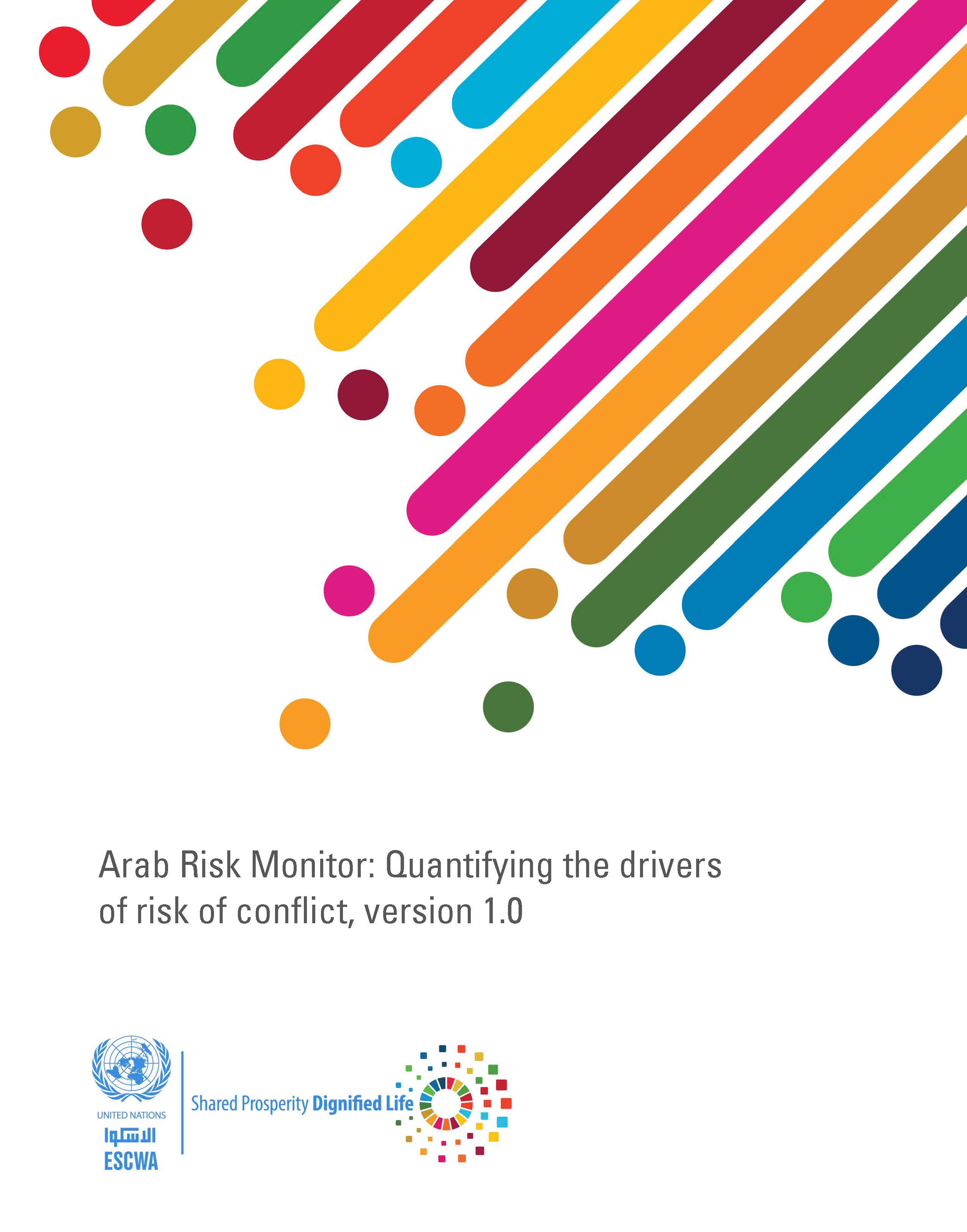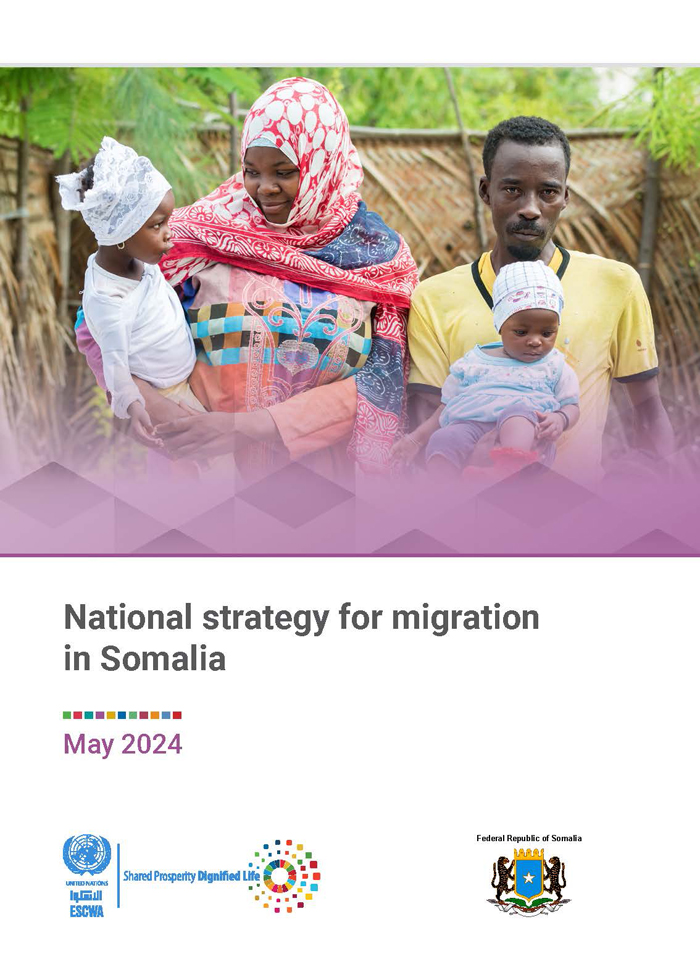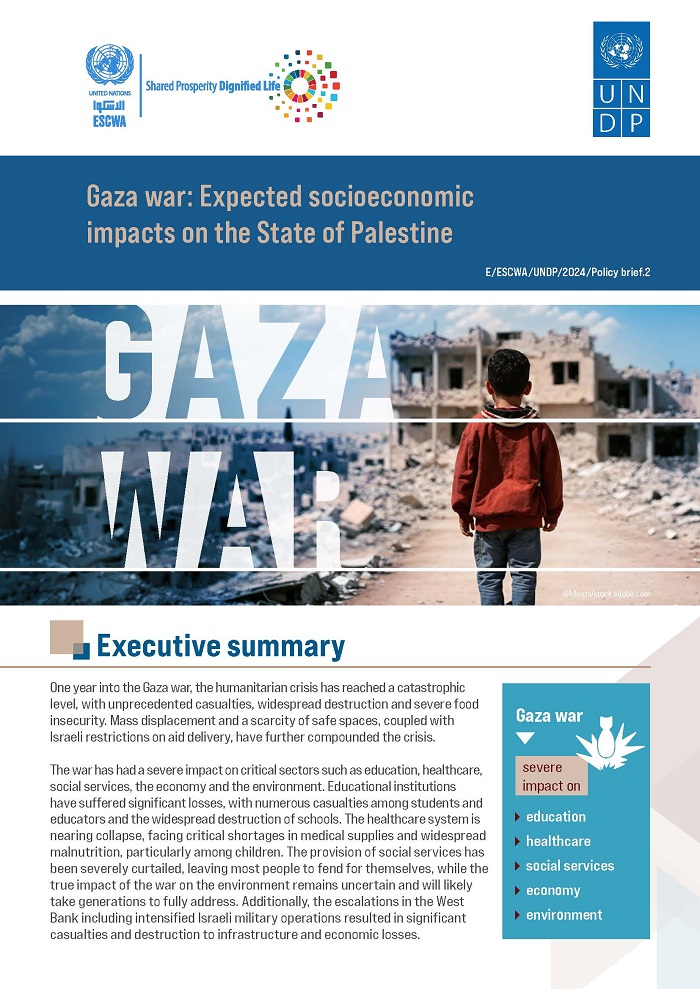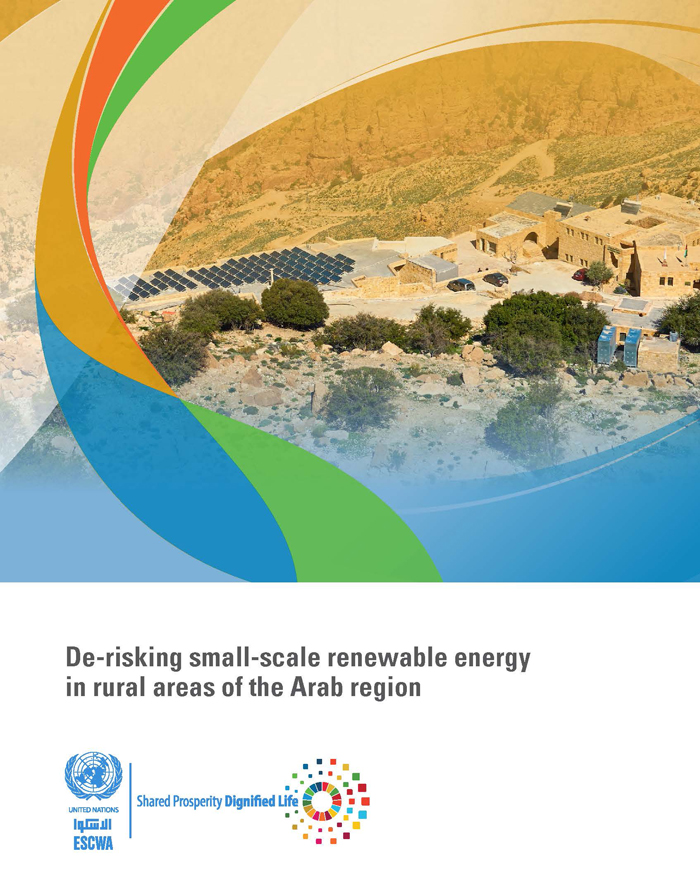
ESCWA Publication: E/ESCWA/CL6.GCP/2023/TP.1
Country: Arab region
Publication Type: Information material
Cluster: Governance and Conflict Prevention
Focus Area: Climate change, Governance & enabling environment
Initiatives: Climate Resilience through Regional Cooperation, Governance and institution building
SDGs: Agenda 2030
Keywords: Risk, Conflict, Climate change, Development, Risk assessment
Arab Risk Monitor: quantifying the drivers of risk of conflict, version 1.0
March 2023
The objective of this technical paper is to present the methodology and indicators for the Arab Risk Monitor report, focusing on the technical aspects of producing the dataset and statistical output that serve to measure the different drivers of risk identified in the paper Arab Risk Monitor: A Conceptual Framework. The conceptual framework of the Arab Risk Monitor identifies several pathways to risk having to do with conflict, climate change and development.
Each risk pathway includes several thematic risk areas. The conflict pathway consists of two areas (historical grievances and enabling environment), the climate pathway two areas (natural resources and climate hazards) and the development pathway three areas (economy, society, and institutions). Within each thematic area, the Arab Risk Monitor provides one or more measures of risk, expressed as either vulnerability or resilience, for a total of 12 risk measures. This paper defines vulnerability in terms of a country’s likelihood to experience shocks, and its structural exposure to these, and resilience in terms of a country’s policy-driven capacity to absorb the negative impacts of risks. Vulnerability, therefore, provides a measure of structural risk, and resilience provides a measure of non-structural risk.
The 12 measures of risk are divided as follows. The conflict pathway includes two measures of risk (conflict vulnerability and conflict resilience), the climate pathway four measures (natural resource vulnerability, natural resource resilience, climate hazard vulnerability and climate hazard resilience), and the development pathway six measures (economic vulnerability, economic resilience, social vulnerability, social resilience, institutional vulnerability and institutional resilience).
The structure of the paper is as follows. After an introduction, Section 1 details the imputation, normalization and weighting/aggregation techniques that have been used. Sections 2, 3, and 4 present the list of indicators by pathway, including the number of observations, country coverage, data management system, and the normalization/standardization criteria used. Section 5 is the conclusion.
Related content
Climate change
, Governance & enabling environment
,
The objective of this technical paper is to present the methodology and indicators for the Arab Risk Monitor report, focusing on the technical aspects of producing the dataset and statistical output that serve to measure the different drivers of risk identified in the paper Arab Risk Monitor: A Conceptual Framework. The conceptual framework of the Arab Risk Monitor identifies several pathways to risk having to do with conflict, climate change and development.
Each risk pathway includes several thematic risk areas. The conflict pathway consists of two areas (historical grievances and enabling environment), the climate pathway two areas (natural resources and climate hazards) and the development pathway three areas (economy, society, and institutions). Within each thematic area, the Arab Risk Monitor provides one or more measures of risk, expressed as either vulnerability or resilience, for a total of 12 risk measures. This paper defines vulnerability in terms of a country’s likelihood to experience shocks, and its structural exposure to these, and resilience in terms of a country’s policy-driven capacity to absorb the negative impacts of risks. Vulnerability, therefore, provides a measure of structural risk, and resilience provides a measure of non-structural risk.
The 12 measures of risk are divided as follows. The conflict pathway includes two measures of risk (conflict vulnerability and conflict resilience), the climate pathway four measures (natural resource vulnerability, natural resource resilience, climate hazard vulnerability and climate hazard resilience), and the development pathway six measures (economic vulnerability, economic resilience, social vulnerability, social resilience, institutional vulnerability and institutional resilience).
The structure of the paper is as follows. After an introduction, Section 1 details the imputation, normalization and weighting/aggregation techniques that have been used. Sections 2, 3, and 4 present the list of indicators by pathway, including the number of observations, country coverage, data management system, and the normalization/standardization criteria used. Section 5 is the conclusion.



